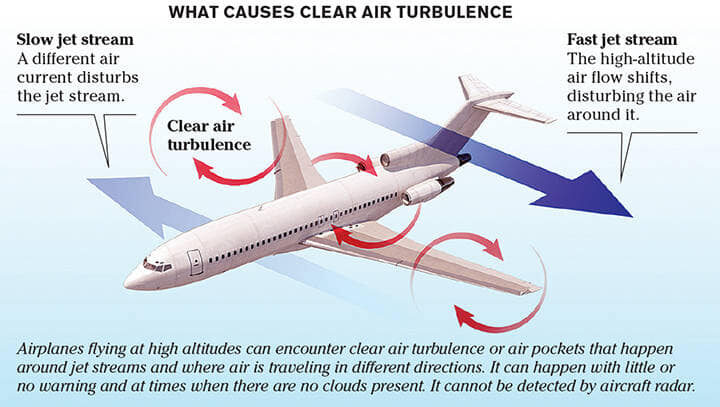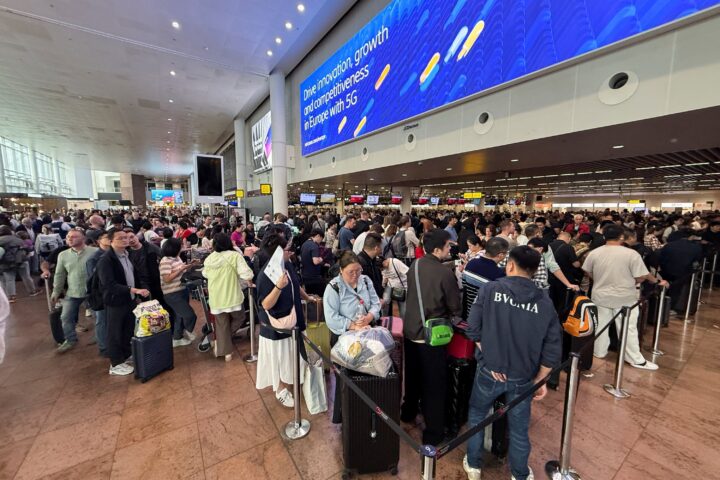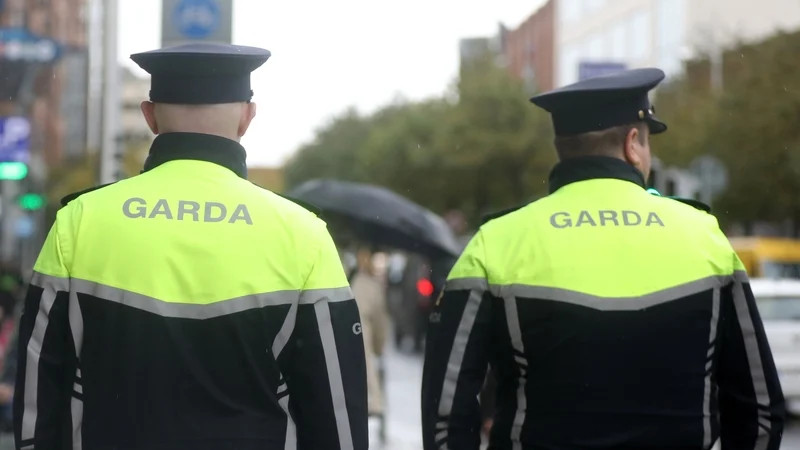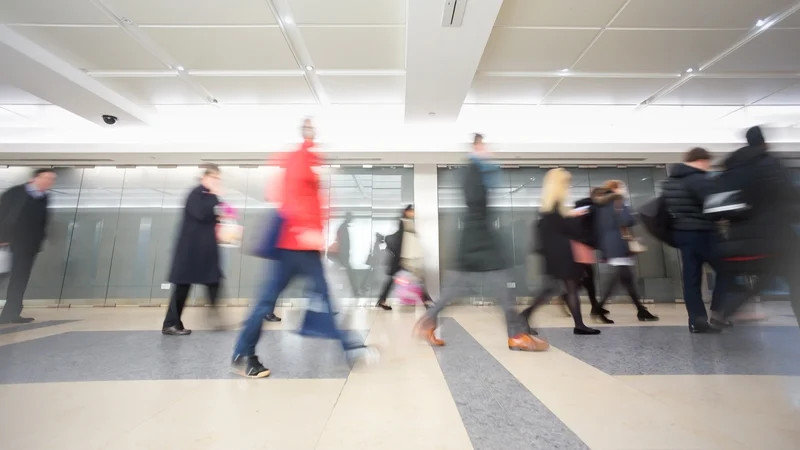
Clear air turbulence occurs at high altitude in seemingly calm skies and is notoriously difficult to predict
A bad bout of turbulence on an aircraft is a scary part of air travel and experts say flights are getting bumpier as climate change affects weather patterns. One culprit, clear air turbulence, occurs at high altitude in seemingly calm skies and it’s notoriously difficult to predict. Kevin Byrne is a former Air Corps Lieutenant Colonel and an airport security and safety auditor and he joined the Today with Clare Byrne show on RTÉ Radio 1 to discuss what’s causing this (This piece includes excerpts from the conversation which have been edited for length and clarity – you can hear the discussion in full below).
Byrne explains how the problem of clear air turbulence is getting worse from a pilot’s point of view as both the number and severity of incidents increases. “In the last 45 years, they’ve actually noted that it’s increased by 55% because they kept records, but it’s expected to get three times worse by the 2050s. That’s just 25 years from now, so it will seriously affect all of the long haul flights and indeed many of the shorter haul flights.
“The aircraft can drop 100 metres, that’s 300 feet, so it’s cruising at a particular level at 600 miles an hour, and suddenly the aircraft is down. It’s literally pushed into a current of air. Either it’s going down or up or left or right. It depends. Air is a fluid dynamic situation and they can’t tell you how long it’ll last, what’s happening and there’s no prediction. That is the serious danger we have at the moment.”
The issue can happen anywhere, says Byrne. “It’s more pronounced around the tropics such as places like Malaysia, parts of Africa, even over the Pacific, and indeed more and more over the Atlantic now. There are disturbances there that weren’t there before. IATA, the International Air Transport Association, is doing studies on this and it’s been taking records from 1.8 million flights to see if they can predict what can happen in different parts of the world in different seasons. There are lots of meteorological organisations trying to get involved and predict this so the aircraft won’t fly through them, they’ll fly around them if at all possible.”
What happens to planes when they suddenly drop 100 metres in the sky? Byrne talks about a recent incident involving a 777 – where people onboard were seriously injured, many were hospitalised and one person died – but there was no damage to the plane. “They did a very thorough study of the engines, the airframe, all the bolts and nuts and that kind of thing. Even the avionics weren’t affected by it.
“Aircraft are designed to take a certain amount of G-force. When you fly down, when the aircraft drops like that, the wings tend to bend. In the case of the 787 Dreamliner, which was in the news recently, I’ve seen the winglets, the wing tips, bend through two metres. They’re designed to bend and take as much of the forces they can so there’s not going to be permanent damage except in exceptional circumstances.
However, it’s a different matter for passengers. “The problem is the people inside the plane are not strapped down and they are subject to damage”, says Byrne. “Newer versions of aircraft have stronger cabins, which can take higher loads. They’ve got better locks on them because we’ve heard of cases where people’s duty free has popped out and hit somebody two rows away and given them an injury on the head, for example. That can happen, but it’s unusual.
“Now, there are cases too where people have been fired by the G-forces and they’ve actually broken the overhead locker with their head, and that’s not a good place to be. It’s a serious injury. It you’re sitting down, there’s no reason in the wide world which you should have your seatbelt open. It should be tied, and I think it should be mandatory. I don’t see the point in taking that risk at all.”
Your routine flights are going to have to be extended
The big problem with clear air turbulence is that it’s unpredictable. “If the pilots have radars on and it’s a stormy day in the winter over Europe for example, they will predict it and they’ll say ‘look, in the next five minutes we’re going to have some turbulence. Please stop serving and strap in your seats and that kind of thing, and we’ll be through it in four or five minutes’. It’s comforting.
“It’s more disturbing to tell people we’re going to fly for seven or eight hours. We don’t know where or when we’re going to hit clear air turbulence, but we’re sure to hit it. All that does is upset the passengers needlessly.
Byrne says the solution is still some time away. “There’s a new design which is now being studied in Austria and Sweden called flat plates, which will be able to sense the clear air bulence and put measures in place. The wings will be bouncing a little bit, but it will be much less than would be if the aircraft hadn’t been fitted with these things. They’ve yet to be proven in commercial aviation, but they will be in the next decade or so.”
In the meantime, Byrne says airlines will have to take some action and change routes. “Your routine flights are going to have to be extended. It’s going to cost more fuel and it’s going to cost more in terms of emissions and that kind of thing. But you have to do it because if we don’t take any measures now, we’re going to have serious injuries and we’re going to have to remove aircraft in some cases off particular route, and that would be unconscionable at the moment.”















